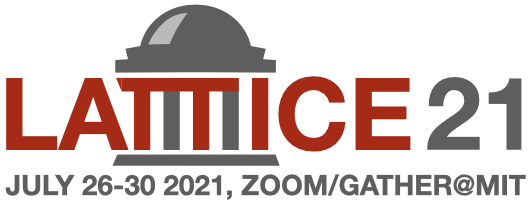Speaker
Description
The hadron resonance gas (HRG) model is often believed to correctly describe the confined phase of QCD. This assumption is the basis of many phenomenological works on QCD thermodynamics and of the analysis of hadron yields in relativistic heavy ion collisions. We use first-principle lattice simulations to calculate corrections to the ideal HRG. Namely, we determine the sub-leading fugacity expansion coefficients of the grand canonical free energy, receiving contributions from processes like kaon-kaon or baryon-baryon scattering. We achieve this goal by performing a two dimensional scan on the imaginary baryon number chemical potential ($\mu_B$) - strangeness chemical potential ($\mu_S$) plane, where the fugacity expansion coefficients become Fourier coefficients. We carry out a continuum limit estimation of these coefficients by performing lattice simulations with temporal extents of $N_\tau = 8, 10, 12$ using the 4stout-improved staggered action. We then use the truncated fugacity expansion to extrapolate ratios of baryon number and strangeness fluctuations and correlations to finite chemical potentials. Evaluating the fugacity expansion along the crossover line, we reproduce the trend seen in the experimental data on net-proton fluctuations by the STAR collaboration.
